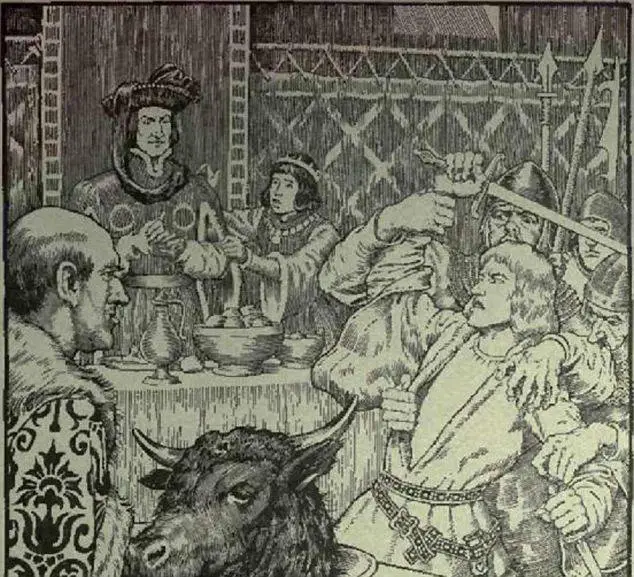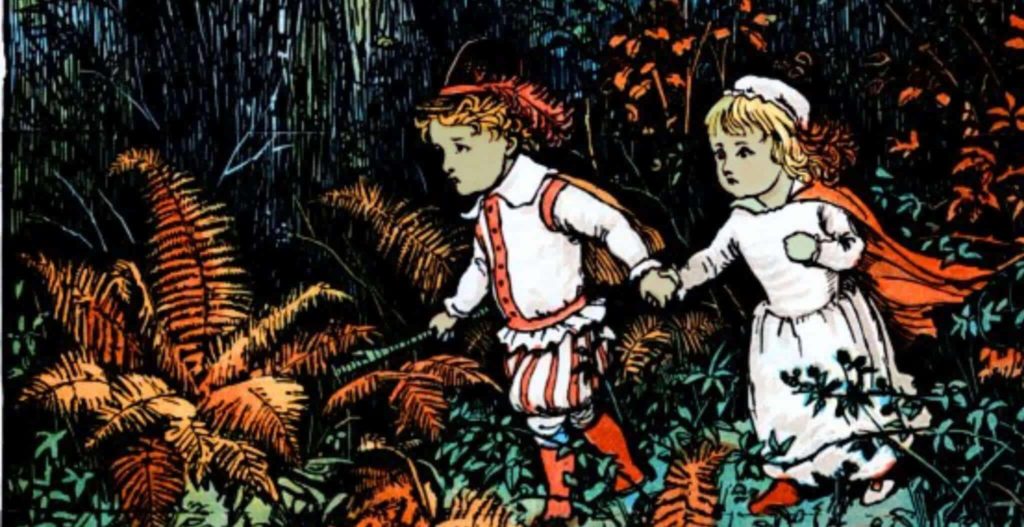Last updated on July 22nd, 2022 at 05:00 pm
In the ninth episode of the third season of the massively successful HBO television series, Game of Thrones, there is an extended scene in which the story ark of much of the show pivots.
This is based around the wedding of Edmure Tully to a daughter of Lord Walter Frey, a supposed ally of Robb Stark, the recently proclaimed King of the North of Westeros, the fictional land in which Game of Thrones is set.
A convivial atmosphere at the wedding in a large banquet hall takes a dark turn eventually as Frey’s soldiers begin locking the doors of the hall.
Moments later, assassins disguised amongst the guests and at vantage points above the main hall begin stabbing those guests who are allied with Robb Stark to death.

Eventually, after a stand-off in which Robb Stark’s mother threatens to kill Lord Frey’s wife, Stark, his mother, and his wife is killed, changing the politics of Westeros for years come.
The event is known in the series as the Red Wedding. But while Game of Thrones’ millions of fans will be wholly familiar with the episode, few are aware that the author of the books on which the series was based, George R. R. Martin, based the scene on an incident from the history of Late Medieval Scotland. This was the so-called Black Dinner.
The Black Douglases
Before examining the Black Dinner, it is necessary to take a quick look at the politics of fifteenth-century Scotland and, in particular, the history of the Clan Douglas, who has affectionately become known as the Black Douglases.
The Clan Douglas was an extended network of nobles who were related to one another and who was one of the most powerful aristocratic lineages in Scottish history.
During the Late Medieval period, running roughly from 1300 to 1500, they were the most powerful political grouping in Lowland Scotland, the English-speaking part of the country around Edinburgh, Glasgow, and Stirling.
The most senior branch of the Douglases held the title of earls of Douglas. The earldom came with an extensive estate and power in southern Scotland.
Other branches of the family eventually obtained other estates and titles, notably the earldom of Angus from 1389 onwards, which made this branch of the Douglases one of the most powerful in eastern Scotland around the town of Fife.
Political Turmoil in Fifteenth-Century Scotland
In the early fifteenth century, Scotland’s politics was thrown into disorder. In 1406 the heir to the throne, Prince James, was captured by King Henry IV of England’s government while attempting to travel to France.
Shortly afterward, James’s father died, making the young prince King James I of Scotland. However, the English, aware of the benefit of keeping the Scottish monarch captive, did not release James for another eighteen years.
In the interim, a regency council was established in Scotland to rule in his absence. The fourth earl of Douglas, Archibald Douglas, became the leading figure in this, further strengthening the Douglases’ position in Scotland.
Eventually, James I was allowed to return to Scotland, and things became more stable in the northern kingdom. However, in the late 1430s, Scotland again plunged into political turmoil.
First, James I was assassinated in a political revolt led by his uncle, the earl of Atholl, in February 1437. His son, James II, who was just six years old at the time, succeeded him.
Second, Archibald Douglas, the fifth earl of Douglas and the most powerful noble in Scotland, was appointed to serve as Lieutenant General of Scotland during James’s youth, but he died in the summer of 1439 from a mystery fever.
Far from being succeeded by an influential member of the Douglas clan, his son, William, who was little more than 14 or 15 years old, became Douglas’s sixth earl. Thus, Scotland in 1439, Scotland was suddenly ruled by an eight-year-old, and its most powerful noble was barely a teenager.
The Black Dinner
This was the context in which the Black Dinner took place. In late 1440, the young sixth earl of Douglas’s cousin, James Douglas, a man in his late sixties by that time, became determined to seize power himself.
James Douglas had acquired great power since the 1400s, developing a reputation as a competent military commander and politician and acquiring extensive lands, notably Abercorn Castle.
He supported Douglas’s fifth earl when he was appointed as Lieutenant General for the child king, James II, in 1437, but when the fifth earl died in 1439, Douglas determined to seize control of the earldom himself.
Therefore in late 1440, he invited his cousin, the sixth earl, who was probably about 16 years of age, along with his younger brother David, to a banquet at Edinburgh Castle. King James II, who was now ten years old, would also attend.
This was the event that became known as the Black Dinner. During the meal, Douglas’s servants brought out a large platter on which a black bull’s head had been placed.
This was a symbol of death in medieval Scotland, and death was what followed. In the moments thereafter, Douglas’s men seized the sixth earl and his younger brother and had them dragged out to Castle Hill outside.
There they were given a mock trial in which they were accused of a made-up conspiracy against the King and others. Then, over the protests of the King himself, Douglas had the sixth earl and his brother beheaded.
Douglas then usurped the earldom of Douglas, becoming the seventh earl. This made him the most powerful noble in Scotland. He dominated the country during the King’s minority, down to his death two and half years later in the spring of 1443.
His son, William, succeeded him as the eighth earl of Douglas and became the dominant political figure in Scotland for years after that, but eventually, the King, whose protestations had been ignored at the Black Dinner, had his revenge. In 1452, now in his early twenties and able to rule in his stead, he and a group of his other nobles attacked and killed William.
Comparison of the Red Wedding and the Black Dinner
There is no doubt that George R. R. Martin was partially inspired by the Black Dinner when he came to writing the sections of his book, A Storm of Swords, in which the Red Wedding takes place.
However, speaking some years after writing it, Martin did note that he was also influenced by the Massacre of Glencoe, an incident in Scotland on the 13th of February, 1692.
Scottish government forces murdered approximately thirty members of the MacDonald Clan of Glencoe due to their unwillingness to swear allegiance to Queen Mary II and King William III, who had usurped the thrones of England, Scotland, and Ireland from Mary’s father, King James II, in 1688.
Between them, the Black Dinner and the Massacre of Glencoe are two of the most infamous incidents in Scottish political history. Martin has made it clear that the Red Wedding was partially based on elements of both these events.

